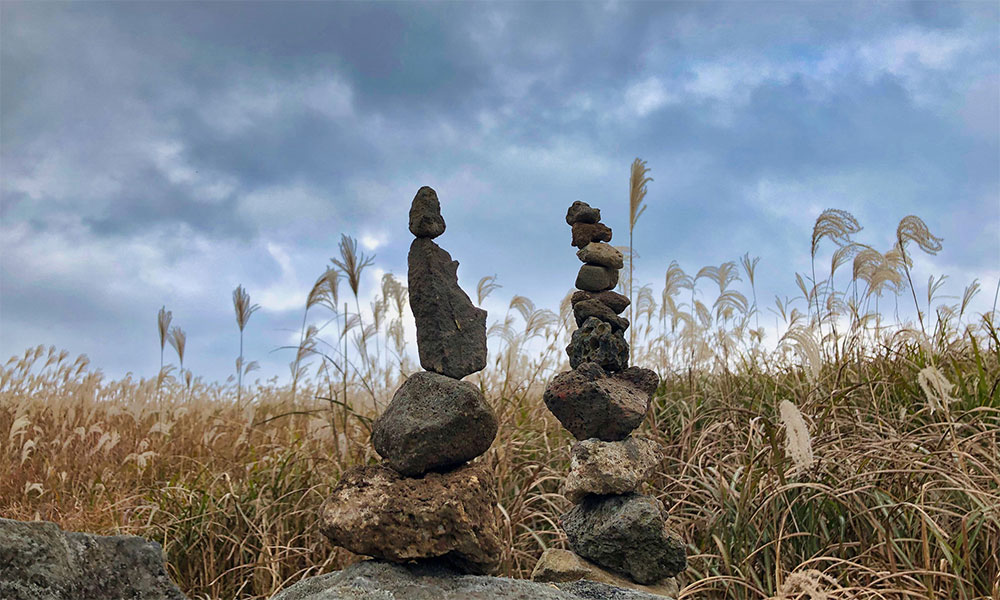Let’s admit it – most of us get distracted quite easily. Our minds keep on drifting. We worry needlessly about seemingly unimportant things. And even though we might be working longer hours, we feel that we are not being productive enough. In fact, research shows that people spend at least 47 percent of their waking hours thinking about something other than what they are doing. We lose focus, which takes a toll on productivity, creativity and quality of work.
Many of us are just not present in the moment.
For leaders, it is extremely important to be mindfully present. In fact, in a survey of 2,000 employees, my ex-colleagues at Bain & Company found that among 33 leadership traits, the ability to be mindfully present (also called centeredness) is the most essential of all. So, this week, my message focuses on the incredible benefits of mindfulness, why it makes you a better leader, and how to start and sustain it.
While the practice of mindfulness is thousands of years old, it is more relevant than ever today: in a world where attention is getting increasingly fragmented, our most precious resources are focus and awareness. As RasmusHougaard and Jacqueline Carter explain in their Harvard Business Review article, How to Practice Mindfulness Throughout Your Work Day:
Two skills define a mindful mind: focus and awareness. More explicitly, focus is the ability to concentrate on what you’re doing in the moment, while awareness is the ability to recognize and release unnecessary distractions as they arise. Understand that mindfulness is not just a sedentary practice; mindfulness is about developing a sharp, clear mind.
The regular practice of mindfulness has a plethora of benefits. Among other things, it can help you:
- Enhance productivity, by enabling you to give your full attention to the task at hand
- Regulate your emotions, by increasing self-awareness
- Work better with other people, by increasing moment-to-moment awareness of their feelings and responses
- Deal with criticism and feedback, by sharpening emotional intelligence
- Develop greater compassion – for others as well as for yourself
For leaders, mindfulness offers added advantages.
Each day, you need to absorb and assess a startling amount of information in order to make smart decisions. Mindfulness enables you to tune out the noise, concentrate on the pertinent issue, and make better decisions. It also trains you to form stronger relationships and remain calm during crises – both hallmarks of good leadership.
Finally, a mindful approach opens up new possibilities and pathways to success, by opening your mind and helping you see past traditional narratives to reframe problems.
As you become more mindful, your brain actually undergoes certain changes. Activity decreases in the amygdala, the primitive part of your brain, where anger or anxiety trigger knee-jerk reactions. Instead, it shifts to the prefrontal cortex – which is responsible for rational thought and executive functioning. To put it another way, mindfulness puts the most logical part of your brain in charge, rather than the most reactionary part. This allows you to remain calm, stay in control, and focus better.
Here are seven ways in which you can begin and sustain mindfulness:
1. Prep for success
Let’s begin with the most important condition: regular practice. None of these positive outcomes can be gained by a one-day workshop or training programme – although those can serve as a good starting point. Studies have shown that leaders who practice at least 10 minutes of mindfulness each day enjoy far more benefits than those who don’t.
To increase your chances of keeping at it, think about the specifics before you start. Most people find it best to practice mindfulness in the morning, but you can choose any time you feel is most realistic. Also, don’t worry, you don’t have to create a special “meditation corner” or procure a yoga mat – all you need is a quiet, comfortable space. Once you decide on the where and when, I strongly advise scheduling your daily mindfulness session. Put it in your calendar and make sure your status shows up as “busy” during that time. (If you find 10 minutes too difficult, start with just two minutes – then work your way up each fortnight.)
2. Breathe in, breathe out
So, what exactly does practicing mindfulness involve? In its simplest, most effective form, it means bring your full attention to your breath. Sit in a quiet spot, and close your eyes. As you inhale and exhale, pay attention to your breath. When your mind starts to wander (and it will!), gently bring your thoughts back to your breathing. Allow the distractions to come, then let them go. Don’t worry if your mind begins to race in a hundred different directions – that is completely natural, as our brains aren’t used to doing nothing.
Along with this, you can try guided breathing, yoga or simple meditation. A number of mindfulness apps and podcasts are also available.
3. Notice, name, pause
With mindfulness, you start becoming more aware of your own emotions. In her Harvard Business Review article, If Mindfulness Makes You Uncomfortable, It’s Working, Amy Sen Ju gives an example of how this can help you become less reactive:
There’s Natalie, who is working on becoming a more patient leader. Over the course of the past year, she received feedback that her hard-changing style rubs others the wrong way. The tone of the feedback suggested that if she didn’t make some measurable changes, she could derail her career. Sometimes, she says, it feels like she “just can’t help herself,” and she lashes out with a negative tone and body language.
So, Natalie began observing herself in action, like a non-judgemental witness. She paid attention to the triggers that made her lose control as well as the body sensations, inner “voice-track”, and underlying emotions she experienced.
Natalie began to notice that she felt her jaw tighten and her blood pressure rise most acutely when someone on her team didn’t perform. The voice-track was a harsh critic that screamed, “This person is so incompetent! How dare she risk how others perceive me?” As Natalie shared, “What I came to realize was how much I dislike the feeling of being embarrassed. It’s been a big turning point for me to understand why I react the way I do in these situations”.
Understanding that she was often driven by the need to prove herself, Natalie was able to take charge of her own reactions. As she learned to notice and name her own feelings and sensations, she was able to identify exactly when she began feeling uncomfortable – and hit the pause button. This is what Chade-Meng Tan, author of the book Search Inside Yourself, calls the “sacred pause” – it is the moment in which you choose not to give in to your worst instincts.
4. Create tech-free zones
Given the constant presence of devices in our lives, it’s unrealistic for many of us to simply “stop using devices so much”. What you can do, however, is limit the use of technology. Whether you like scrolling through social media or browsing the news, make time to enjoy it – then put your phone away and give your complete attention to the next task.
You can also be more thoughtful about emails. One of my bad habits was to get on to email as soon as I woke up in the morning. However, nearly every mindfulness expert recommends that you avoid checking your inbox first thing in the morning, as the flood of emails can easily derail your day. This is also typically the time when your focus is at its peak, so reserve it for complex, demanding work. So, I am trying now to get to my emails later and then check them every few hours. I have also turned off notifications on whatsapp and email to avoid compulsively checking them.
5. Take a mindful breath
Before important conversations and meetings, make it a point to take at least one deep mindful breath. This helps you let go of your day so far and prepare to be truly present in the moment, thus enabling a fresh perspective. In his article, Just 6 Seconds of Mindfulness Can Make You More Effective, Chade-Meng Tan explains that simply six seconds of mindful breathing prove effective for two reasons:
The physiological reason is that breaths taken mindfully tend to be slow and deep, which… lowers stress, reduces heart rate and blood pressure, and calms you down. The psychological reason is that when you put your attention intensely on the breath, you are fully in the present for the duration of the breath. To feel regretful, you need to be in the past; to worry, you need to be in the future. Hence, when you are fully in the present, you are temporarily free from regret and worry. That’s like releasing a heavy burden for the duration of one breath, allowing the body and mind a precious opportunity for rest and recovery.
6. Take a mindful minute
You can share the benefits of simple mindful breathing with your team as well. For example, why not begin meetings with a “mindful minute”? Allow all team members to arrive physically andmentally. If it feels like you are all way too busy to take out a few moments to do nothing – well, those are the days when you most need mindfulness!
7. Notice progress
After you begin your mindfulness practice, pay attention to your own progress. Were you more mindful during an interaction? Did you find yourself picking up on subtle interpersonal signals? Were you able to regulate your emotions and avoid a negative reaction? Did you manage to stay calm in a crisis? Seeing the benefits will give you the motivation to keep going.
So, do practice some of these techniques to pay more attention to the present moment. This will help you be more focused, become more aware of your presence and the way you impact others. And if you have any other mindfulness practices that have worked well for you, it would be great to hear them.








Dear Mr. Gambhir,
Your article on mindfulness is really exceptional and very much required in today’s demanding professional life.
Till a year or two years back I myself used to be chaotic and out of control on the professional front beyond particular point and that hampered by career progress and growth.
A year back I did the Inner Engineering course of ISHA yoga and practising the kriyas daily for around 40 minutes has helped me a lot. As you rightly mentioned the breathing techniques are the most important and helps you in having cool and calm approach, clarity and keeping the situation in control.
Your article re-emphasizes all these facts. Thanks for such a nice article.
Regards,
Sachin Pathak